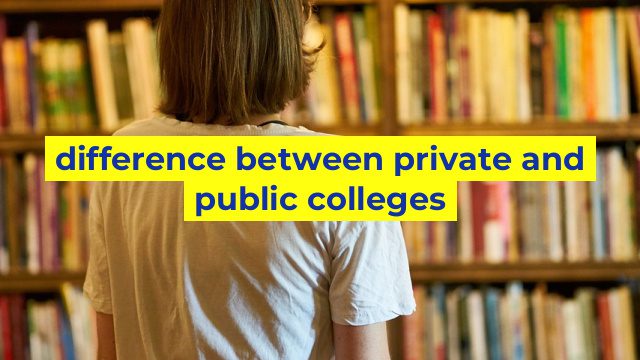The Real Differences between Private and Public Colleges
Choosing the right college is among the most significant decisions you’ll make in your life. With the numerous options available, it might seem tough to know where to start. One aspect to consider is whether to attend a public or private institution.
Size & Student Body
Public colleges are state-sponsored, making them bigger and offering various course options, including specialized fields. Consequently, public colleges typically have large student populations, often exceeding 30,000 learners. Large student bodies offer diverse interests and extracurricular activities like sports teams and clubs. These institutions also tend to have more diverse student populations that reflect the diversity in the states they serve.
Private colleges, on the other hand, are smaller, with less diversity among the students. Private colleges cater to fewer students, leading to more intimate and personalized education experiences with greater opportunities for faculty interaction. The smaller student bodies also make evaluating teacher performance easier than it would be in large public universities.
Costs
Cost is a massive consideration for many college students. Public colleges are often more affordable than private colleges because they receive state funding, making it feasible to spread costs over a large number of students as opposed to private schools, which often rely heavily on tuition and outside funding.
Private colleges tend to cost more than public schools due to the absence of state funding. However, generous financial aid options often bridge the gap between the two.
Academic Programs and Accessibility
Due to their size, public colleges can offer a vast array of majors, leading to greater program diversity. Public colleges typically have more undergraduate programs offered, as well as better access to graduate and research programs.
Private colleges are often more specialized, offer fewer programs but have an unwavering focus on the programs they offer. Smaller class sizes and direct access to faculty members create opportunities for individualized instruction and particular attention to student needs.
Campus Life and Culture
Public universities tend to have an exciting student life, with a broad range of campus activities, clubs, parties, and sporting events. Public institutions also tend to be more culturally diverse than private ones because of their larger student body.
Private colleges, on the other hand, offer more close-knit communities and often promote a values-oriented, mission-focused culture. They may offer a more organized, professional environment, such as specialized internship or mentoring programs.
In conclusion, the choice between a private and public college can hinge on numerous factors such as student body size, cost, accessibility to programs, and campus culture. However, the differences do not boil down to merely cost or size. Ultimately, the best choice involves carefully examining the varied benefits of each school and matching them to your individual goals, personality, values, and specific academic curiosity.
Table difference between private and public colleges
| Feature | Public College | Private College |
|---|---|---|
| Tuition Cost | Lower cost for in-state students | Higher cost for all students |
| Size | Larger student population | Smaller student population |
| Availability of Programs | Wide variety of programs offered | More selective with program offerings |
| Class Size | Larger class sizes | Smaller class sizes |
| Financial Aid | More financial aid options available | Less financial aid options available |
| Endowment | Typically lower endowment | Typically higher endowment |

